The concrete mixing plant (BSU) equipment should be designed for the production of concrete mixtures in accordance with GOST 7473-94, GOST 10181 (00) with a batch volume of 1-1.5 m3 for forced mixing of fine-grained, super-hard cement-sand mixtures. The transportation of the prepared concrete mixture from the batching plant to the machine bunker should be carried out by a specialized trolley or transport bunker in one step; manual overloading of concrete mix during transportation is not allowed. Transportation of the prepared mixture in open (unprotected from atmospheric agents) areas is not allowed.
The total time spent on transporting the mixture to the forming machine should not exceed 4 minutes.
The BSU should have a high degree of automation, including computer control of processes and computer control over the main units, the consumption of raw materials and the creation of a database of waste materials.
The concrete mixer must ensure the speed of preparation of the mixture with its high homogeneity (mixing in opposite flows). The preparation of hard concrete mixtures should be calculated for a water-cement ratio of 0.28-0.38 with a cone draft of 1.5-4 cm.
Circular injection of water into the concrete mixer under pressure over the entire area of the mixture being prepared is MANDATORY !!!
The automated control system must be able to automatic correction of the mixture composition both when the moisture content of inert aggregates changes and during the preparation of the concrete mixture (the presence of a moisture sensor in the concrete mixer, integrated into the ACS of the batching plant). BSU should ensure trouble-free operation of issuing stable of the same concrete mixture according to the recipe in 2 or 3 shift mode operation, especially when molding products along the entire working length of thermostats.
BSU Operating Conditions
- operating mode - year-round;
- ambient air temperature in the building + 5 ... + 35оС,
- the presence of a 3-phase network -380 V ± 5% with a frequency of 50 Hz ± 2% with grounding;
- network power up to 100 kW (depending on the type of concrete mixer);
- continuous water supply - from the water supply network;
- mixing water must have a mixing temperature not lower than 200C;
- the dosing system must ensure dosing accuracy by weight, 1% for cement, water, chemical additives and 2% for inert materials;
- the dosing system must provide for moisture assessment, inert materials with the ability to quickly adjust the amount of water based on the measurement results;
- in the concrete mixer, a system for measuring and maintaining the water-cement ratio with the operator's operational intervention should be installed;
- the air from the compressor must be supplied dry;
- cement and inert aggregates are cleaned of foreign objects;
- the recommended chemical additive "Tencem 2" (normal The dosage of undiluted concentrated chemical additive is 1 part per 1000 parts of cement. If greater plasticity is required, the dosage can be increased to 2 parts per 1000 parts of cement) Pre-mixed with water in a ratio of 1:10 to 1:30 should be served in the concrete mixer is separate, the container must have a bubbling system;
- the temperature and quality of the concrete mix should be regularly monitored by the laboratory;
- after the end of each shift, the concrete mixer and the rest of the BSU equipment are serviced by personnel, cleaned by a water installation high pressure, lubricated and prepared for subsequent work;
- the gap between the blades and the concrete mixer armor is not more than 3-4mm.
Technical Requirements
The automated concrete mixing plant must comply with the requirements of these technical conditions and characteristics.
Table 1: Technical characteristics of the batching plant
| № п/п | The name of indicators | Unit | The uantity indicator |
| 1 | Technical performance for mixing. | measurements | 15 |
| batch / hour | |||
| 3 | Number of concrete mixers | 1 | |
| 4 | Number of aggregate fractions | PC | 3 |
| 5 | Smallest aggregate size | PC | 3-10 |
| 6 | Largest aggregate size | mm | 5-20 |
| 7 | Cement supply silo volume | 3 м | 60-100 |
| 8 | Aggregate feed bins volume | 3 м | не менее 3х15 |
| 9 | Installed capacity | кВт | до 100 |
| 10 | Working hours: concrete mixing and dosing equipment | Automatic (standard), Semi-automatic (additional) Manual (auxiliary) | |
| 11 | Working pressure in systems: pneumatic water supply system | МПа МПа | 0,5 ...0,6 0,2 .0,4 |
Table 2: Technical characteristics of pipettes
| 1 | Aggregate dispenser system inert materials a type | Ribbon or 2 shiberny |
| 2 | Aggregate batcher: type / quantity dosage limits dosage error | multicomponent, strain-weight / 3 200 ... 2000 kg * 2% (1000-2000 kg) ** 10 kg (150-1000 kg) |
| 3 | Cement batcher: type / quantity dosage limits dosage error | strain-weight / 1 60 .600 kg 1% (250-600kg) |
| 4 | Dosing capacity of water: type / quantity dosage limits dosage error | strain-weight / 1 30 .300 kg 1% (100-300 kg) |
5 | Additive dispenser type 1, dosage limits, dosage error | Weight, strain gauge 3-30 kg one %** |
| 6 | Delivery of inert materials to concrete mixer | conveyer belt or skip |
no more than 670 kg of one aggregate from one conveyor (tape batcher)
dosing accuracy of 2% aggregates must be guaranteed when continuous filling of bins. Minimum balance in bins 1/3 volume during operation.
In winter, the temperature of the aggregates loaded into the consumables bunker BSU, must be at least + 5 0С. Loading the frozen aggregates not allowed.
Mixing water should have a temperature not lower than 200C.
The container for the chemical additive must have a bubbling system, the chemical additive itself is dissolved and dosed according to the recipe.
Requirements for materials
For the normal operation of the BSU equipment, the Customer must ensure compliance with the following material requirements
- sand must comply with GOST 8736-93;
- cement must comply with GOST 10178-85;
- water must comply with GOST 23732-79;
- chemical additives must comply with TU 2601-002-201127879-96. The water-cement ratio must be maintained in each batch with accuracy ± 1%.
Regardless of the season, inert materials must be prepared and have constant humidity, or this humidity should be taken into account and recalculated when preparing the recipe. ACS BSU should be able to determine the order of loading in concrete mixer of inert materials and water with a chemical additive in certain operator of proportions according to a given algorithm. An example of a concrete mixer loading algorithm: 100% iner / mat + 1/3 water + 1/2 cement + 1/3 water + 1/2 cement + chemical / additive + 1/3 water. Water must be supplied to the mixer under pressure through the system sprinklers to achieve uniform mixing over the entire area composition. It is desirable to have a system for monitoring the current load of the motor concrete mixer.
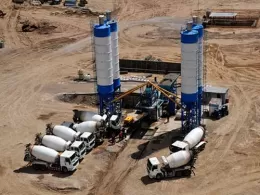
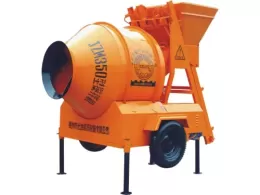
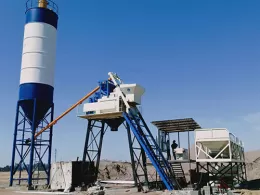

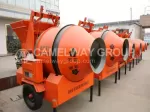
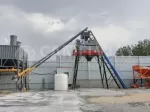
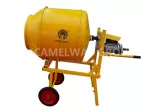
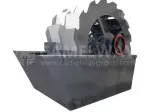
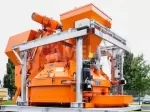
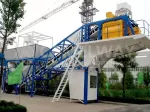
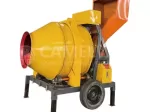

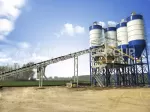
0 Comment